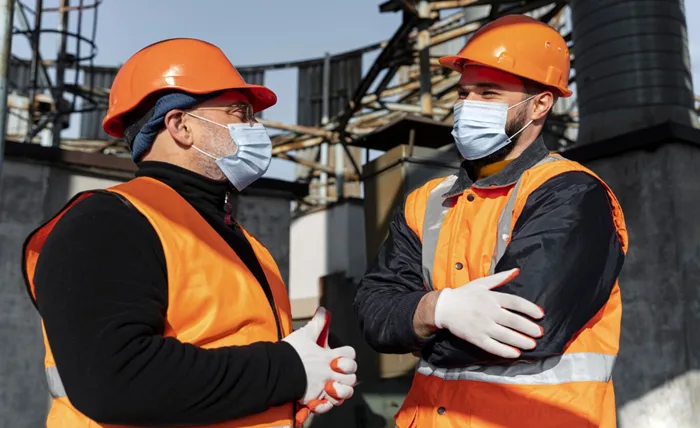Workplaces in the UK have become safer over the last few decades, thanks to a combination of cultural and regulatory factors. But the problem remains significant.
According to data collected on behalf of the Health and Safety Executive, around 5.4% of workers in Great Britain suffered from an illness which they believed to have been either caused or exacerbated by work.
This is a considerable drain on productivity, as well as being an avoidable source of human suffering. If you’ve been injured, you can often claim compensation via a personal injury claim calculator and a competent solicitor. But it’s a better idea to avoid the risk in the first place.
High-Risk Sectors
Certain kinds of work stand out as inherently more hazardous. Others come with specific risks that should be anticipated and mitigated through regular assessments and the implementation of the right procedures.
Agriculture
Viewers of ‘Clarkson’s Farm’ might recall a scene early in the show where Jeremy Clarkson is shopping for equipment. He notices that many of his fellow shoppers are missing thumbs. Recently, one of the stars of the show, Kaleb Cooper, revealed suffering a painful leg injury after having been kicked by a cow.
Agriculture is a punishing environment, involving extreme temperatures, gruelling physical labour, and machinery designed to churn through soil. Dealing with all of these hazards is critical.
RIDDOR puts agriculture as by far the most dangerous industry, with 7.87 per 100,000 workers being killed in 2022/2023. This compares with just 2.1 in construction, and 0.41 in all industries.
Construction
Construction, too, is an industry infamous for its inherent danger. Objects falling from height, trailing cables, slippery surfaces, and power tools can all provide problems of a different kind.
Forestry
Danger in forestry stems from two sources. The trees themselves, and the tools being used to fell them. This is a natural product that can often behave in unpredictable ways, and even experienced foresters are vulnerable.
Medicine
If you work in medicine, then, by definition, you are almost constantly exposed to risk. Preventing infections from spreading is a constant battle for hospitals and other medical facilities – but this is not the only challenge to be met.
Fishing
Finally, we should consider fishing. When you’re out at sea, performing dangerous labour on a big slippery boat, the chances of injury are significant. What’s more, when workers do become injured, the availability of medical care is rarely reliable.
Common Workplace Injuries and Fatalities
The statistics identify five main sources of fatal accidents. Eight people died in 2022/23 because of animals injuring them. Four died because of a fall from height, while another four were struck by objects. Three were killed by moving vehicles, three from contact with machinery, and five because of every other cause.
We should note that the rate of fatal injury is much higher for those older than sixty. Even if you don’t consider yourself ‘frail’, you are much likelier to come off worse if you should be involved in an accident. Don’t take unnecessary risks.
Safety Measures and Protective Policies
There are a number of rules and principles we might abide by.
The most obvious is to pay attention constantly. Don’t allow yourself to become complacent after having performed the same action over and over again. You’re more likely to injure yourself doing something familiar than you are something new and demanding, because you’re going to be focussing much harder during the latter.
We should also think about personal protective equipment. Your PPE should be comfortable and unrestrictive, while still offering protection. Moreover, the tools you use to perform your work should be well looked after. Putting in place a protocol for workplace safety and maintenance is essential.
Addressing Safety Concerns and Moving Forward
So, how are we going to drive down these statistics? By insisting that everyone follow the rules, and by identifying sources of risk where they arise. This means developing a culture wherein workers feel confident pointing out the things that might potentially cause harm. Training, and particular regulations which deal with specific threats, might also be extremely useful.



